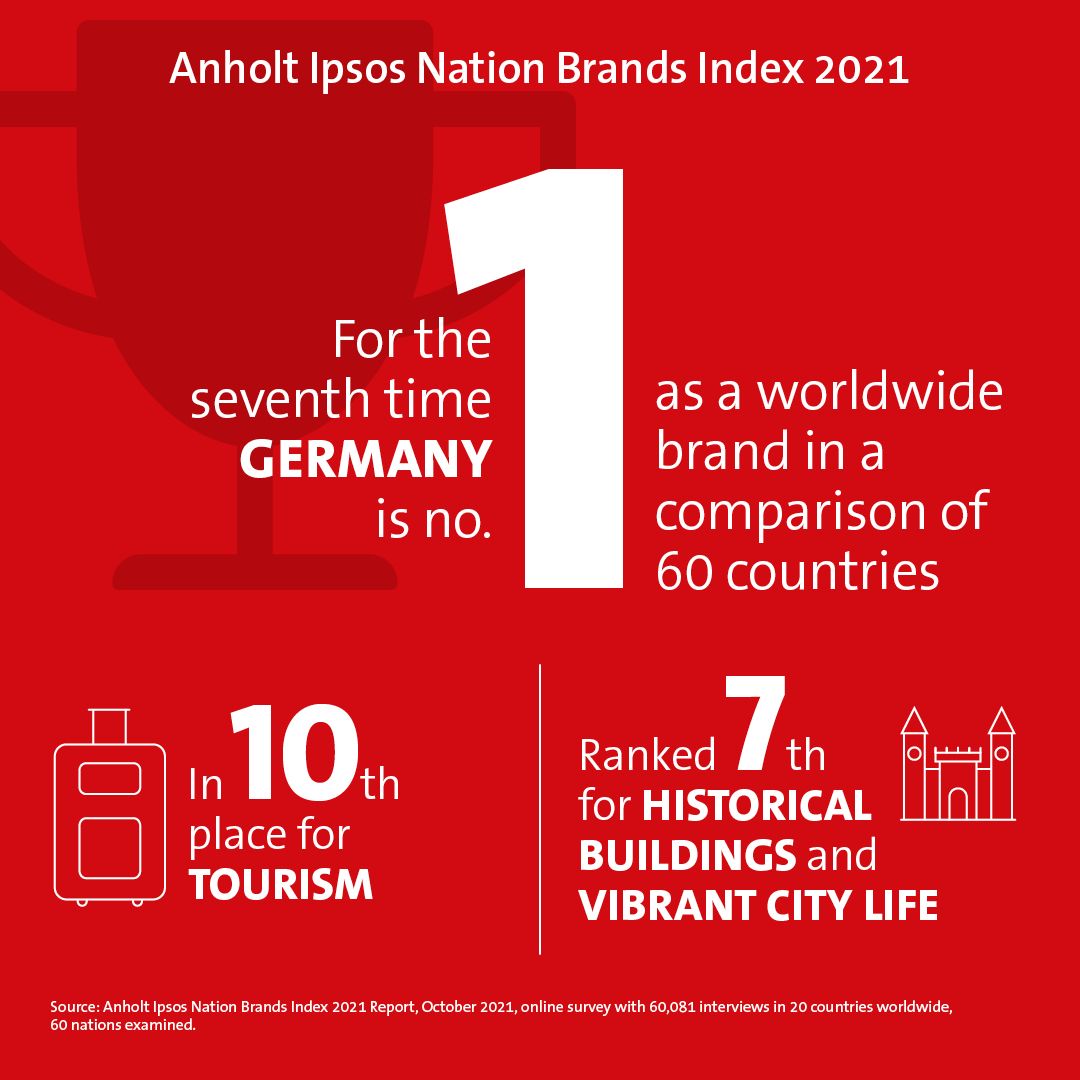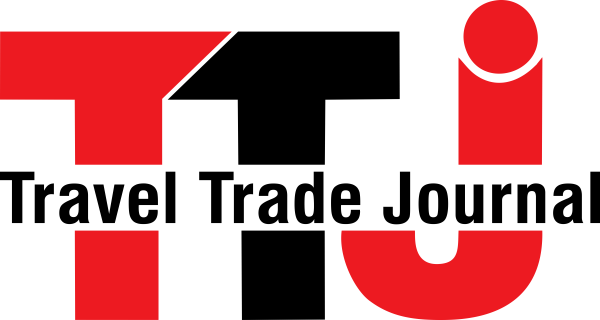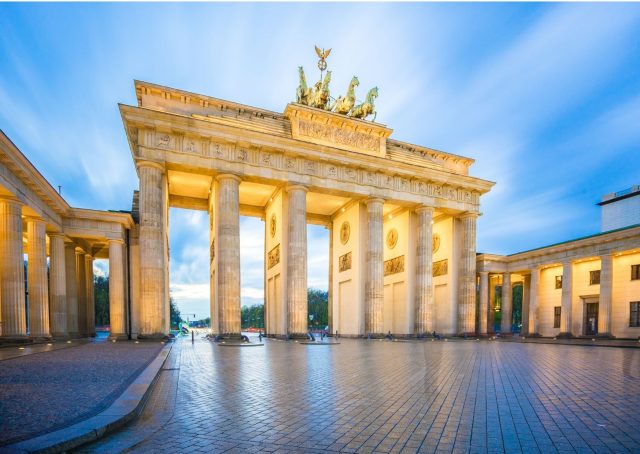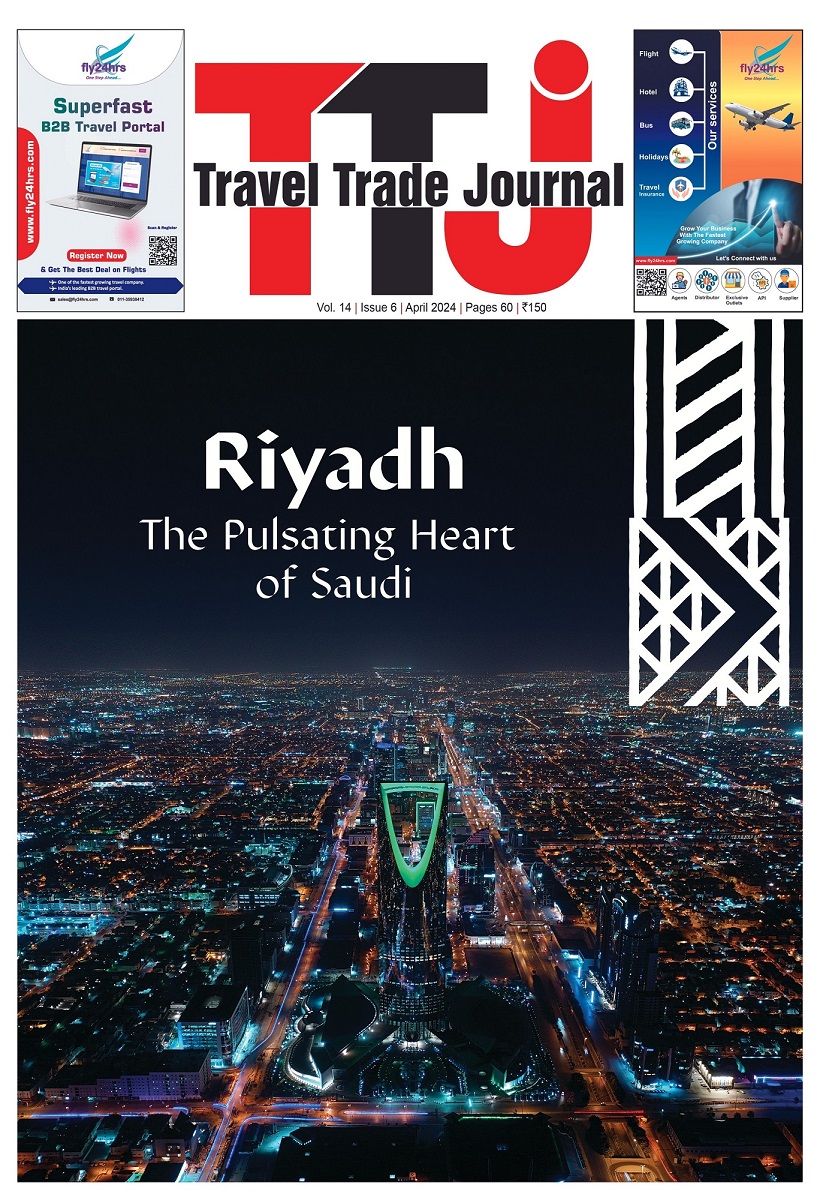Germany’s tourism industry can once again report a significant increase in international demand. This corresponds directly with the latest studies on Germany’s global brand image. This is the result of recent analyses by the German National Tourist Board (GNTB).
Site Minder’s World Hotel Index, for example, registers a share of foreign guests in bookings of German hotels of 30.8 percent across 400 global hotel booking channels for October 2021. According to this, the incoming share on these reservation channels has reached the pre-crisis level again.
At the same time, the world’s leading market research company Ipsos announced today that Germany has once again taken the top spot in the renowned Anholt-Ipsos Nation Brands Index (NBI) 2021. It is followed in second and third place by Canada (70.64 points) and Japan (70.52 points). Since 2008, Germany has always ranked among the TOP 3 in the NBI, and in 2021 it is in first place for the seventh time.
Petra Hedorfer, Chief Executive Officer (CEO) said, “The latest news demonstrates the direct link between Germany’s excellent reputation, growing willingness to travel in our source markets, our countercyclical marketing activities and a successful recovery strategy for restarting incoming tourism, as well as positioning Germany as a travel destination in the increasingly fierce competition among destinations.”

In the overall NBI 2021 ranking, Germany received 71.06 points, 1.94 more than the previous year and also the highest average score measured in the history of the NBI.
Germany is ranked in the top 10 in five of the six sub-indices that make up the NBI: Exports, Government, Culture, Tourism and Immigration/Investment. In the tourism segment, survey participants rate Germany at 73.24 points, 2.65 points better than in the previous year, which means 10th place in the global ranking. In the subcategories on tourism location, “Historic Buildings” and “Vibrant Cities” in particular enjoy above-average esteem, ranking 7th in each case.
In addition to the general image comparison, the NBI identifies the five most pressing global tasks in the opinion of the respondents. According to the survey, the most important issue in 2021 is the protection of the environment and natural resources, followed by poverty reduction, improving living conditions and quality of life, dealing with health crises and protecting human rights. In the assessment of the solution concepts for these tasks, Germany is in second place in a global comparison, and even in first place under the aspect of health management.
For the NBI 2021, more than 60,000 population-representative interviews were conducted with people aged 18 and older in 20 countries between July 6 and August 13, 2021.
Talking on the occasion Romit Theophilus, Director for India, The German National Tourist Office said, “We are thrilled that our efforts to promote Destination Germany has borne such outstanding results. These statistics merely reaffirm and revalidate our confidence in the destination and its offerings. We would like to thank our trade partners for helping us reach these goals. Without their support and synergies this achievement wouldn’t have been possible.”
He added, “What makes Germany an outstanding destination is the great variety and unprecedented value for money offered.”
Market indicators for the restart of incoming tourism
According to Forward Keys, international flight arrivals in Germany rose to about a quarter of 2019 levels by July 2021, returning to about a third of pre-crisis levels in August and September 2021.
Sales of international train tickets to Germany through Deutsche Bahn’s e-commerce sales channels were 37.0 percent of 2019 comparables from January through July 2021, 41.5 per cent through August, and 44.3 per cent through September 2021.
MKG Consulting puts hotel occupancy (based on domestic and foreign guests) at 52.2 per cent in the last week of July, rising to 54.1 per cent at the end of August and 56.2 per cent of pre-Corona year comparable at the end of September.

















































